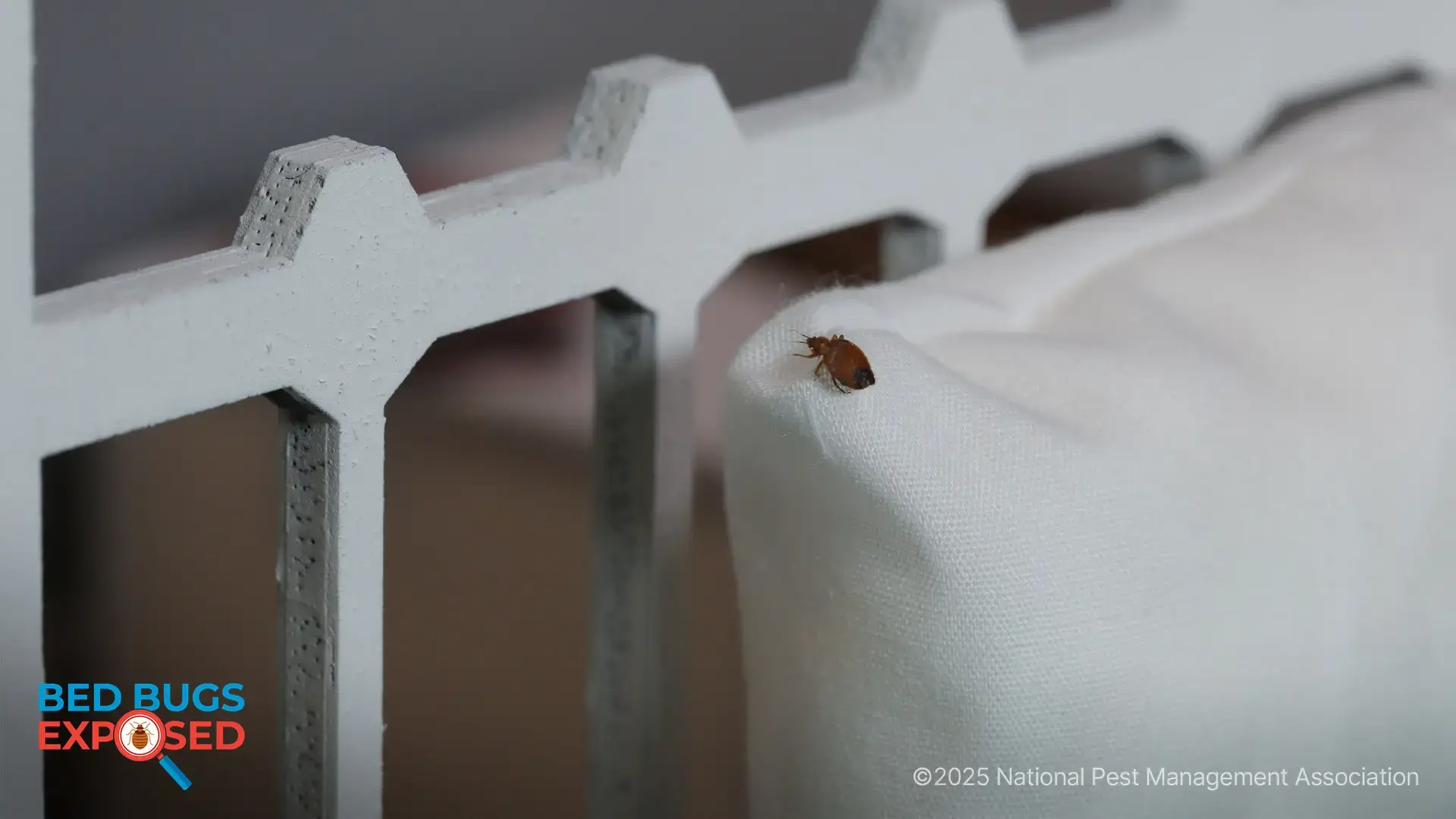2025 Bed Bug Facts and How to Prevent an Infestation

Bed bugs remain one of the most challenging pests to identify and eliminate. Known for their stealthy habits, rapid reproduction, and ability to travel undetected, they are a growing concern for homeowners and travelers alike. In recognition of Bed Bug Awareness Week (June 1–7), the National Pest Management Association (NPMA) released new survey data and launched an educational video series titled Bed Bugs Exposed to help the public understand just how elusive and problematic these pests can be.
Below are the most important insights and statistics about bed bugs in 2025:
Survey Results What Americans Know About Bed Bugs
The Harris Poll & NPMA – April 2025 (2,099 U.S. Adults, Ages 18+)
- Only 29% of Americans can correctly identify bed bugs.
- Just 28% of Americans check their hotel rooms for bed bugs before staying overnight.
- Only 44% of Americans would leave their accommodations if they found bed bugs.
Where Bed Bugs Are Being Treated
University of Florida & NPMA Survey of Pest Control Professionals
More than 82% of pest control professionals treated bed bugs in the past year. Treatments were most common in the following locations:
- 89% – Single-family homes
- 88% – Apartments and condos
- 70% – Hotels and motels
- 57% – Nursing homes and assisted care facilities
- 36% – College dormitories
Bed Bug Habitat and Behavior
- Bed bugs are present in all 50 U.S. states.
- Common hiding spots include: beds, box springs, headboards, couches, baseboards, electrical outlets, and even public transportation.
- They are expert hiders, often nesting in tiny crevices and seams.
- Bed bugs can survive for months without feeding and tolerate a wide range of temperatures.
- Prevention is easier than eradication. Key steps include:
- Inspecting luggage and hotel rooms
- Washing clothes in hot water after travel
- Avoiding used or secondhand furniture
Bed Bug Bite Symptoms and Reactions
- Bed bugs typically bite at night while humans sleep.
- Bites are initially painless, but develop into itchy, red welts, often in lines or clusters.
- Some people show no visible reaction, making early detection difficult.
Bed Bug Identification and Life Cycle
- Adult bed bugs are:
- Reddish-brown, oval-shaped, and about ¼ inch long
- Flat before feeding; swollen and red after feeding
- Equipped with 6 legs and 2 antennae
- Flightless
- Nymphs (immature bed bugs) are smaller and nearly transparent.
- Females can lay up to 5 eggs per day, totaling over 500 eggs in a lifetime.
- Bed bug nymphs take approximately 21 days to mature into adults.
Signs of a Bed Bug Infestation
- Dark spots (fecal matter)
- Shed skins
- Eggshells
- Live bugs
The Challenge of Eliminating Bed Bugs
- 76% of pest professionals say bed bugs are the most difficult pest to eliminate.
- DIY treatments are rarely effective.
- If you suspect a bed bug infestation, contact a licensed pest control professional immediately.
Learn More
NPMA’s Bed Bugs Exposed video series provides a close-up look at what an infestation could look like and prevention advice from entomologists. Visit BedBugsExposed.PestWorld.org to watch the videos and read more tips.

Learn About Rodents
Rodents invade millions of homes each winter. Learn more about them!

NPMA's Bug Barometer Forecast
The latest Bug Barometer® forecast from the National Pest Management Association reveals what homeowners across America can expect from pest activity this fall and winter.

NPMA's Bed Bugs Exposed Project
Check out NPMA's Bed Bugs Exposed project to learn more about this hitchhiking pest and how to prevent an infestation at home.
Find a PEST PRO in your area

Learn About Rodents
Rodents invade millions of homes each winter. Learn more about them!

NPMA's Bug Barometer Forecast
The latest Bug Barometer® forecast from the National Pest Management Association reveals what homeowners across America can expect from pest activity this fall and winter.

NPMA's Bed Bugs Exposed Project
Check out NPMA's Bed Bugs Exposed project to learn more about this hitchhiking pest and how to prevent an infestation at home.
